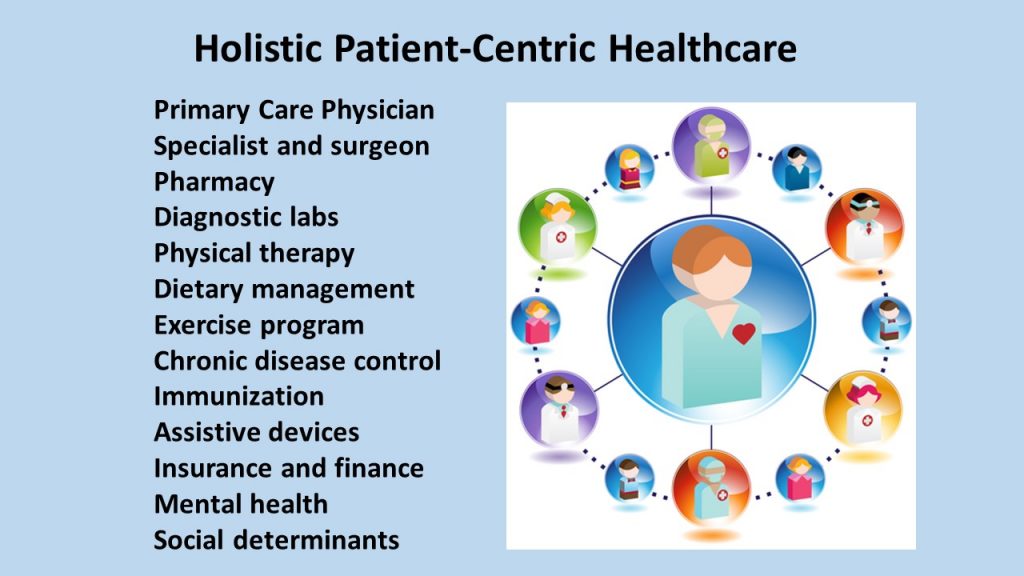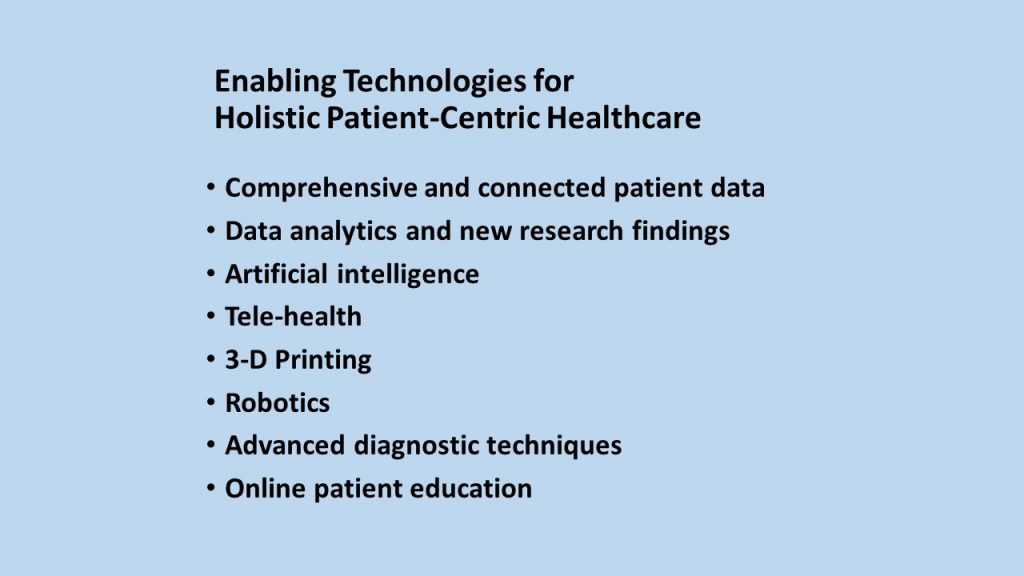
122. New Era of Healthcare | 醫療保健的新世代
– Musings of Dr. Jamie C. Hsu, 8.21.2021
Have you noticed that the healthcare industry has gone through a major transformation over the last decades? An aging population, widespread chronic diseases, the advancement of new technologies, and a shortage of healthcare workers have accelerated this transformation. It is the emergence of patient-centric health care.
As patients, we are now surrounded by people and services that take care of our health and wellness. The traditional primary care doctors continue to serve as the screeners, monitors, and referrers of our health. Behind them is a whole army of people and facilities for the health care we need. Their work is done and documented through massive EMR or EHR (Electronic Medical/Health Record) Systems. With that, patients and health providers can more conveniently and accurately talk about test results, appointments, medications, follow-up actions, dietary plans, rehab, and exercise programs. The patients, not the protocol or institution, more visibly become the center of attention.
In addition to that, even the locations of health care are becoming more dispersed with doctors’ offices, urgent care centers, walk-in clinics, pharmacies, and diagnostic centers located in shopping centers and community neighborhoods. If you pay attention, you’ll be astonished by how, over the years, we have become surrounded and served by so many different people who care for our health and wellness. This circle of healthcare providers even expands to include eastern medicine and practices such as acupuncture, tai chi, and herbal medicine.
This massive transformation of the healthcare industry is driven by the demographic changes of more elder and chronically ill people, and the shortage of healthcare workers. Fortunately, the problem is alleviated somewhat by many new technologies such as robotics, AI diagnostics, cloud data center, and personal health monitoring devices. We now can monitor our own exercise programs, heart rate, blood pressure, blood sugar level, BMI, and many other important biomarkers.
As patients, we need to better understand our own health and take full advantage of the patient-centric healthcare system so we can live a healthy and happy life.


醫療保健的新世代 (2021/8/21)
-作者 許俊宸博士
-中譯 薛乃綺
不知道您是否有注意到醫療保健行業在過去幾十年裡,正在經歷重大的變革?人口高齡化、慢性疾病越來越多、新科技進步、以及醫護人員短缺也加速了這樣的轉變。以患者為中心的醫療保健因此而產生。
作為患者,我們的周圍環繞著關心我們健康的人及服務。傳統中作為我們主要健康檢查者、觀察者、建議者的主治醫生,仍然持續這樣的服務。在他身後則有一大批人員和設施,提供我們所需要的醫療保健。而他們的工作,是透過大量的EMR或HER(電子醫療/健康紀錄)所完成紀錄的。如此一來,患者和醫療保健便可以更方便、更準確地談論測試結果;也能預約、進行藥物治療、以及後續行動,包含飲食、復健、和鍛鍊的相關規劃。这樣,患者能夠更明顯地成為關注的重點,而不是把醫療程序或是機構的操作当成重點。
除此之外,甚至連醫療保健的地點也變得遍布各方;像是醫生辦公室、緊急護理中心、免預約診所、藥局和位於購物中心以及社區附近的診斷中心。如果你有注意的,你會驚訝地發現這些年來,我們被這麼多不同的醫護人员圍繞著、服務著,在關心我們的健康。這個保健體系甚至外擴延伸到包括針灸、太極拳、甚至中藥等東方醫藥等面向的實踐。
醫療保健體系會發生如此重大的轉變,是由於有更多的高齡人口、慢性病患、以及醫療人員短缺所導致的。幸運的是,機器人、人工智能診斷、雲數據、和個人健康診斷設備等許多新技術在一定程度上緩解了這項問題。我們現在就已經可以自己鑑測自己的復健計畫、心律、血壓、血糖指數、BMI、還有許多其他重要的生物指標數據。
作為一個患者,我們需要更好地了解自己的健康狀況,充分利用以患者為中心的醫療保健系統,才能過上更快樂健康的人生。


